
Shinto shrines, called “jinja” in Japanese, haven’t only played an important role throughout Japan’s history but also are an inherent part of daily life even today.
Pass through the torii, a large gate that marks the entrance to every such shrine, and pray before the main hall to ask the kami (Shinto deities) for a wish and their blessing. But how to do it properly, according to the Japanese?
For Japanese people, this routine comes natural and innumerable people go to a shrine for occasions such as New Year’s and various festivals and holidays throughout the year. For tourists, visiting a Shinto shrine is a unique experience that allows for a brief but fascinating glimpse into Japan’s rich history and traditions.
As such, it’s on the list of pretty much anyone coming to Japan – but how to do it? Generally, it is said that there are no strict rules when it comes to praying at a Shinto shrine and everyone seems to do it just a little differently. Regional customs are also common, and the way of praying can differ by shrine as well. However, there are general worship practices and etiquettes, a routine that works for every shrine you plan on visiting.
Even Japanese people are often not sure about it: “Is this the right way?” and “Did I do it wrong, maybe?” are thoughts that seem to pop up during or after worshiping rather often. To make your experience a pleasant one without insecurities, let’s go over the general rules of praying at a Shinto shrine. For this article, we visited the beautiful Nezu Shrine in Tokyo’s Bunkyo Ward.
Omairi: Worshipping at Shrines

A shrine visit is called omairi. When you’re visiting a shrine, you enter its precincts by going through a gate, called a torii. This gate both marks where the realm of Shinto kami begins and separates it from the secular world. By entering the grounds through the gate, you are stepping onto sacred grounds: be aware of this. Prepare your mind and your heart, calm yourself, and appreciate everything around you, be it visible or not.
Passing the Torii: Bow Once and Taking the First Step with Your Left Foot

There are two important points to remember before passing through this gate: bowing in front of it and taking the first step with your left foot. The torii marks the sanctity of the shrine, marking that you are about to enter a sacred area. It actively separates the regular world from the realm of the kami, or the enshrined deity, which is a calm and quiet place. A torii can be called the official entrance to the kami’s home, so show your respect by taking your hat off if you wear and bowing once before passing through.

After that, start walking along the shrine approach, taking the first step with your left foot. Be mindful to walk on the left side of the way, as the center of the approach is said to be the “place where the kami pass.”
Cleanse Yourself before Prayer at the Temizuya
Every shrine features a water basin, called a ‘temizuya’ (or sometimes chozuya) at which worshipers are supposed to purify themselves, literally and figuratively.
Numerous ladles called hishaku are arranged along the stone basin, ready to be used. Here is how the purification works:

1. Hold the ladle with your right hand and scoop water from the basin. Doing the entire ritual with a single scoop is the ideal.

2. Wash your left hand, change the ladle to the left hand, and wash your right.

3. Take the ladle again with your right hand,

pour a bit of water in the palm of your left and rinse your mouth.

4. Rinse your left hand with a bit of water.

5. Slowly raise the ladle to an upright position to let the water rinse over the handle.
6. Put back the ladle.
*There’s no need to hurry – this cleansing ritual is best performed in a graceful and slow kind of way. After you’ve purified both body and mind, continue on to the main hall of the shrine.
Praying at a Shinto Shrine: Bow Twice, Clap Twice, Bow Once
Just like the purification, the actual worship is also ritualized. A general rule of thumb when going to a shrine to worship: bow twice, clap twice, bow once.

1. Throw your money in the offering box.

2. Bow deeply twice.
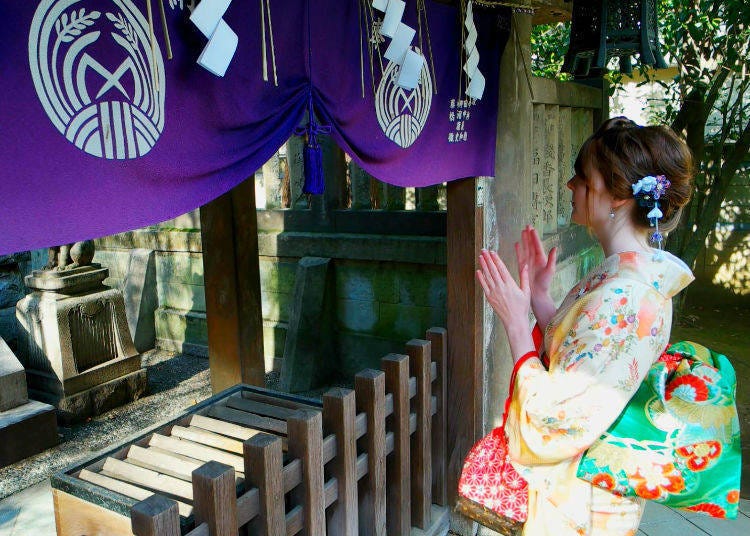
3. After bowing, clap your hands twice.

Should you want to pray, do so after clapping – and do it quietly. Kami do not require spoken words. When you clap, make sure your right hand is a tad lower than the left one.

4. Bow deeply one more time once you’re done praying.

*Regarding the monetary offering: it really does not matter how much or how little you offer, and it is perfectly acceptable to use foreign currency as well.
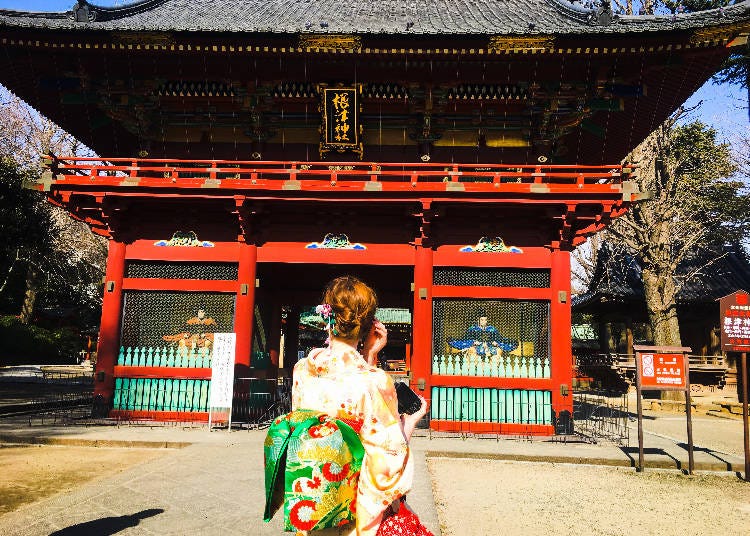
This routine of “Bow Twice, Clap Twice, Bow Once” is the same for every Shinto shrine. It may seem difficult at first, both the praying and the cleansing at the temizuya, but just take your time and do it slowly, one step after another – it becomes surprisingly easy.
A Prayer? A Wish? An Oath?
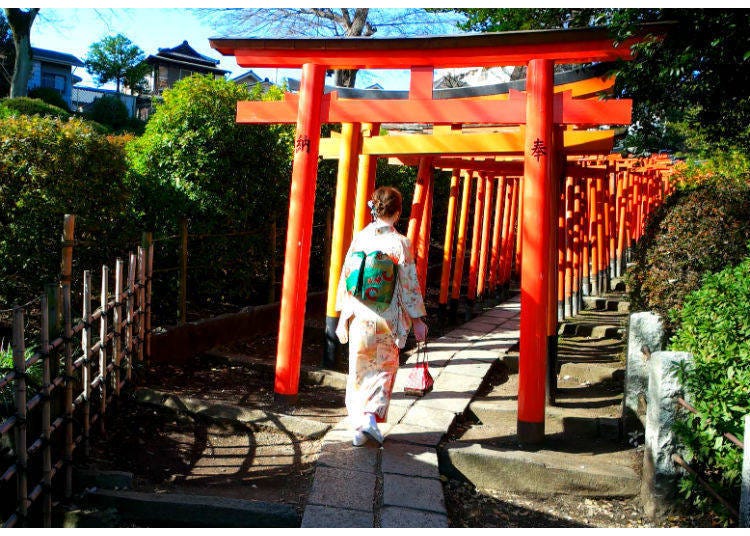
A shrine is said to be a place that bestows happiness and good fortune onto the earthly realm. In the same manner, it is believed that worshiping at a shrine purifies you of any past impurities and fills you with new resolve.
Omikuji: Otherworldly Charms
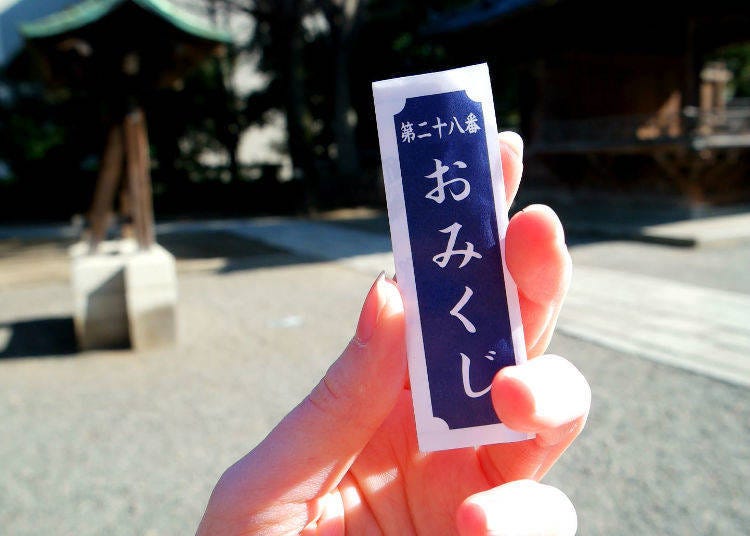
These are little strips of paper called “Omikuji” drawn from a wooden box for a small offering to the shrine, functioning as some form of fortune lottery. Blessings concerning things such as health, business, marriage, and so on are written on the paper, predicting different fortunes.

But beware, you can also get cursed! Curse papers are usually tied either to a tree or a wall provided by the shrine. By doing so, worshipers put their fortune in the hands of the kami of the place so that the curse can be avoided.
Leaving the Shrine: Bow Once Again
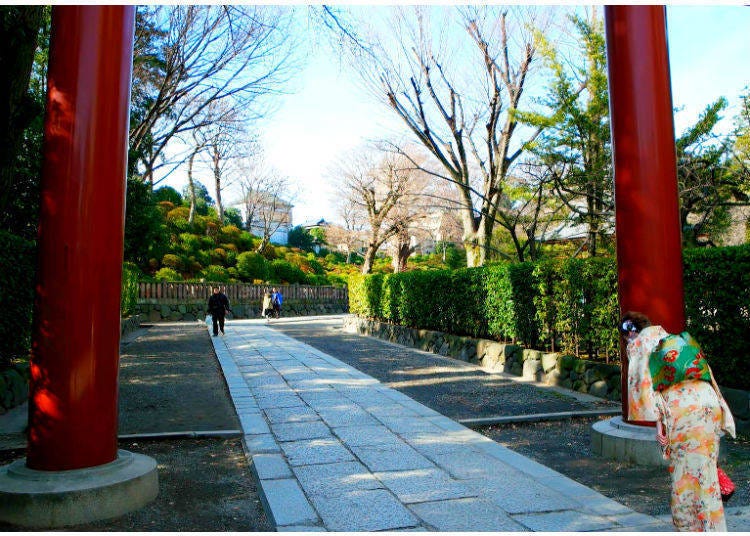
When you leave the shrine, it is custom to bow again towards the main hall of worship.
In Conclusion

While a good majority of the newer Japanese population would not consider themselves particularly religious, Shinto customs and rituals still play an important role in Japanese day to day life, with shrine visits leading the way.

Experiencing these worshipping rituals is sure to offer a unique, authentic glimpse, not only into old Japanese philosophies and traditions, but also on the modern society of the 21st century.
Model: Devan Jean
-

-
Address
1-28-9, Nezu, Bunkyo-ku, Tokyo, 113-0031
View Map -
Nearest Station
Nezu Station (Tokyo Metro Chiyoda Line)
5 minutes on foot
- Phone Number 03-3822-0753
-
Address
1-28-9, Nezu, Bunkyo-ku, Tokyo, 113-0031
*Prices and options mentioned are subject to change.
*Unless stated otherwise, all prices include tax.
Recommended places for you
-

Where to Stay in Matsumoto: 15 Excellent Accommodations Near the Alps, Castle & Onsens
by: Himanshi Shah
-

Where to Stay in Nagano: Curated Selection of Hotels for Every Travel Budget
by: Himanshi Shah
-

Grand Prince Hotel Takanawa: Embrace Japanese Culture and Beauty of the Seasons in a Vast Japanese Garden
by: Satochin
-

April 13: EXPO 2025 Osaka-Kansai Opens Its Doors to the World's Brightest Minds
-
Ad

Stay Connected in Japan: All About eSIMs for Beginners
-

2025 Japan Cherry Blossom Report: Tokyo & Osaka Past Peak Bloom
Inspiration for Accommodations
-

Enjoy Mt. Fuji from the Comfort of Your Room! Recommended Ryokan with Mt. Fuji View
-

Stay Near the Cherry Blossoms! Hotels for Cherry Blossom Viewing in Tokyo
-

Family-Friendly Hotels with Free Shuttle to Disneyland: Convenient Access for a Magical Stay
-

Top Ranked Hakone Hotels with Mt. Fuji View: Enjoy Stunning Scenery from Your Private Space
-

Convenient Tokyo Hotels with Airport Shuttle: Ideal for Families and Heavy Luggage
-

Stunning Tokyo Tower View Hotels: Enjoy Spectacular Scenery from Your Private Space
-

Convenient Asakusa Hotels with Kitchens: Ideal for Extended Family Visits
-

Experience Luxury: Hakone's 10 Best Five-Star Accommodations
-

Enjoy Mt. Fuji Autumn Leaves! Top Hotels Near the Popular Autumn Leaves Corridor
-

Experience Hakone Fall Foliage from Your Room with Stunning Views
-

Nogi Shrine – Discovering Modern-Day Shinto and the Real Last Samurai
by: Pamela Drobig
-

Kanda Myojin: Akihabara's Iconic Shrine of Prosperity
-

Ikebukuro Station Area Guide: Top 15 Spots When You Escape the Station's Maze!
-

7 Things You Didn’t Know About Sensoji Temple - Tokyo's Oldest Temple
-

16 Secrets About Mt. Fuji, the Symbol of Japan: Even Japanese People Don’t Know That?!
-

Meiji Shrine (Meiji Jingu): Exploring the Sacred Sanctuary of Peace in Bustling Tokyo
- #best ramen tokyo
- #what to buy in ameyoko
- #what to bring to japan
- #new years in tokyo
- #best izakaya shinjuku
- #things to do tokyo
- #japanese nail trends
- #what to do in odaiba
- #onsen tattoo friendly tokyo
- #daiso
- #best sushi ginza
- #japanese convenience store snacks
- #best yakiniku shibuya
- #japanese fashion culture
- #best japanese soft drinks





















